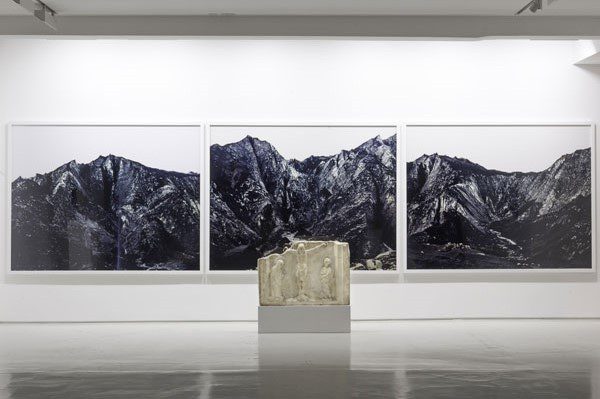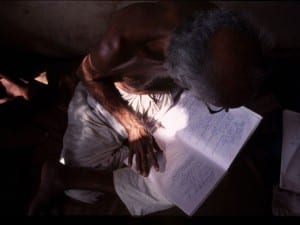Featuring 10 artists working over the past two thousand years, this exceptional exhibition visually investigates the theme of Italian philosopher Giorgio Agamben’s essay What is the Contemporary?
Initially the show appears to be an array of objects, current and ancient, which aesthetically compliment one another remarkably well; however the conversation between these objects actually runs far deeper into history and philosophy. Agamben’s essay asks the question “what does it mean to be contemporary?”, and concludes that it is to be aware of, but slightly out of sync with, your own time – looking upon yourself as an outsider. Represented by Brancolini Grimaldi, and acting as chief curator for this show is photographer Domingo Milella whose work and curatorial methods prove him to be utterly contemporary. Milella has transformed the gallery space into a didactic study of the now; exploring ideas of femininity, religious iconography, shape and, of course, time.
Exhibiting in the show himself, Milella presents a piece which is epitomical of What is Contemporary? – a man stands before an enormous Turkish ruin, camera poised to photograph engravings which he cannot decipher – it is the meeting of two times, the study of the past in the present, or is it the study of the present in the present? “Contemporary Art” is an abstract term – too loose to be considered a movement, yet it intends to describe a certain period. Brancolini Grimaldi specialises in photography, a truly contemporary medium as it cannot impersonate antiquity in the way that a painting might; to exhibit sculpture is therefore an unusual deviation for the gallery, however in bringing archaic objects into a white cube space, they immediately appear as contemporary as the photos on the walls. All of the early pieces were chosen by Milella from antiques specialists Bruno Botticelli and Riccardo Bacarelli, and contribute to a discussion between new and old whilst remaining clearly relevant to the art and life of today; the optical conversation of the works is one of time-traversing links, rather than an argument of contrasts.
Milella’s vast image of ruin is accompanied by another example of fragmentation: a small lichen-coated swan, carved from marble by the Romans and carefully perched ready to fly out of Brancolini’s enormous windows. Elsewhere a spherical carving of a duchess echoes a haunting one-off test photograph for Clare Strand’s Signs of A Struggle – the two standing together as studies of feminine power; whilst a marble satyr compliments her bizarre Girl in Two Boxes print, and the remnants of an ornate Renaissance-era chest compliment her series of geometric net shapes. However the two artists who dominate the space are Dan Holdsworth and Lise Safarti. The first with three colossal positive photographs of craggy black glaciers, sitting behind a 14th century relief of the crucifixion – a rock slab whose pale ochre and dark imagery is mirrored by a mysterious skull-like object in the foreground of Holdsworth’s triptych.
Meanwhile Safarti is coupled with Jacopo del Mazziere to give a separate room an overwhelmingly melancholic atmosphere: the nude in Mazziere’s painting is cold and unfinished, whilst Safarti creates forlorn images of troubled women who are not yet grown.
This exhibition can be appreciated superficially for its outstanding aesthetics and as an opportunity to view the art world’s past and present simultaneously, however dig deeper and an inconceivable number of unexpected connections begin to reveal themselves. What is Contemporary? is an innovative experiment in curating sure to provoke a number of new and exciting conversations.
Chloe Hodge
Brancolini Grimaldi: What is Contemporary?, 24 May until 6 July, 43 – 44 Albemarle Street, London W1S 4JJ. www.brancolinigrimaldi.com
Images: What is Contemporary? Installation view. Courtesy of Brancolini Grimaldini





